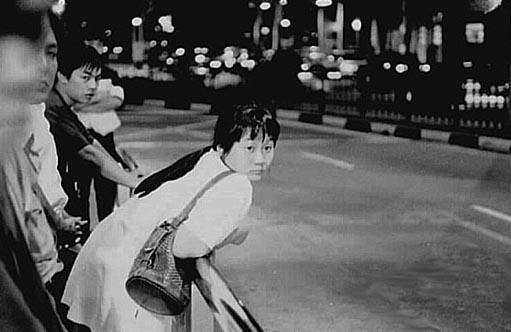
STREET PHOTOGRAPHY, AN INTRODUCTION
Often when I was asked what kind of photography I indulged in, I could not reply directly. I knew it had to be called something, but did believe it belonged to any known genre. Its name escaped me, or simply had not been invented yet. It was not until one day surfing on the Internet, I found a term that aptly cured my dilemma, it was "street shooting".
I had never really known what defined the kind of photography that the masters, such as Henri Cartier Bresson, Gary Winograd or Lee Friedlander were known and for whose I admired. What occurred to me most however about the examples I mentioned is that their work was simply made on the streets, of people going about their normal everyday activities, and sometimes of their emotional peaks and troughs. It essentially was what would be called a human landscape. Their work crystallized human society, depicting scenes that were set in familiar surroundings, and yet proving haunting, sometimes beautiful insights into the human condition. Recording as a historian would, the little differences and similarities that define the way we live.
Why this was important was because when photography began a 150 years ago, the plate cameras of the day were big and bulky. This, and the fact that the sensitivity of available films and the slow lenses meant that most photography could only be done on static subjects. This produced images that lacked dynamism, spontaneity and above all, realism. The development of faster film materials, and more importantly of portable cameras like the Leica initiated a new type of image that captured unposed scenes of life that were realistic because they captured people doing real things.
What exactly would define street photography? Personally I would call it any photography that is done wherever the photographer's experience takes him, and not having any preconceived notion of the final result except the motive to see and experience. The street photographer is also interested in the vignettes of life that reveal something of ourselves to his audience. It need not, as the name implies, be strictly done on the streets. The camera thus becomes a kind of visual notebook or diary.
Street shooting as a genre is something of a specialty that does not readily attract throngs of beginners to its ranks. There are many reasons for this. I have friends who ask me if I know the people that are in my pictures that I take on the streets. When I say I do not, very often the question of why I would want to take pictures of strangers come up. Perhaps it is an Asian superstition, or the perceived lack of value that such pictures carry, since to most people, photographs either are of loved ones from holidays or editorial photography in newspapers that illustrates some form of information. This perhaps superficially explains why the motivation is lacking. The only way to cure this kind of perspective is more exposure to the possibilities that street photography can offer, and to whose work laid it's foundation.
Another vital factor is the fact that beginners are exposed to photography along the traditional lines of portraiture, still life, landscape, etc. Street photography however is not readily definable because it is concerned less with the type of image made, but more with how it was made and what it is intended to reveal. It's value lies in this metaphysical approach to understanding ourselves. The images created sometimes have the power to incite feelings of nostalgia, anger, happiness and many others in the spectrum of human experience. Further becoming the point from where the mind originates the thought process, in the recreation of a story whose beginning and end is up to us to decide.